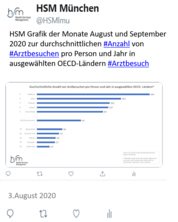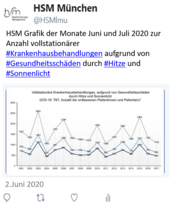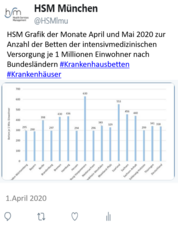Mortality Related to Alcohol and Tobacco Consumption – A Benchmarking of Regional Trends and Levels
| Authors/Editors: |
Vogt, V. Sundmacher, L. Götz, N. Creutz, T. Witzheller, K. Henschke, C. |
|---|---|
| Publication Date: | 2016 |
| Type of Publication: | Articles in Refereed Journals (National) |
| erschienen in: | Das Gesundheitswesen |
| Zusatzinformation: | Volume 1: e1 - e5 |
Abstract
Study Aim
Regional characteristics are being increasingly taken into account in studies on the determinants of health and health-care. A systematic observation and inclusion of regional particularities has, however, been absent from strategic planning and financing decisions to date. Furthermore, regional-level changes over time have, for the most part, not been considered in the existing studies. Accordingly, this article seeks to depict both the levels and trends in potentially avoidable mortality on the district level and to establish a benchmark that shows the theoretical goals for the reduction in avoidable deaths in each district.
Method
Gender-specific and age-standardised potentially avoidable deaths were determined for each of the 413 German districts in the period from 2000 to 2008 on the basis of cause of death statistics provided by statistical agencies of the German federal states. Deaths due to lung cancer and alcohol-related diseases were taken into account as these are considered to be avoidable through primary prevention. The district-specific benchmark values were ascertained using 2 linear hierarchic nested models and tested for significance using an F-test.
Results
Overall, the lung cancer mortality was found to have declined amongst men and gradually increased amongst women during the time period under consideration. The benchmark for deaths from lung cancer in women shows that the increase in mortality is principally observed in West German and urban districts. In relation to the alcohol-related deaths we also see an east-west divide, with higher rates in eastern Germany. Shrinking districts in eastern Germany were able, however, to record a big reduction in rates in recent years. An unfortunate development in the trend of alcohol-related mortality in women was notably observed in regional areas of Bavaria.
Conclusion
The analysis offers decision makers the possibility of pinpointing regions with high intervention need. Increasing lung cancer mortality rates in women living in cities points to, for example, a heightened need for anti-smoking campaigns in urban areas. In relation to alcohol-related diseases, a heightened need for target group-specific prevention was identified in East German districts as well as some districts in Bavaria.





